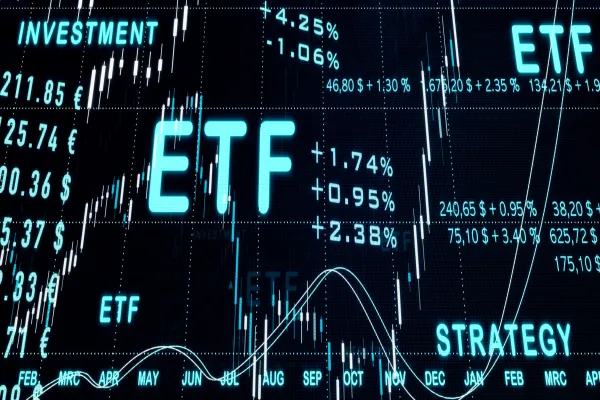My title is lifted, I believe, from an essay by Wesley Mitchell entitled, "The Backward Art of Spending Money." Beginning this way will, I hope, make clear that being a high priest of highfalutin finance theory does not imply that I think rationality in investing behavior is either universal or even widespread.
A sizable fraction of the nation's resources are committed to mutual fund, pension fund and brokerage organizations. Old and new historical records suggest that their clients could be better served by plain-vanilla Vanguards or TIAA-CREFs and that this would release perhaps 90 percent of the finance industry's resources to produce other comforts and necessities of life.
Would the efficiency and growth of our mixed economy system be reduced by such a switch to lean and canny diversification? Or would the economy's efficiency and growth be elevated by such a change?
There is no preponderant evidence in favor of the affirmative or the negative on this. In particular, it is probably a romantic myth that departing systematically from a broadest diversification will generate random subsidies to venturesome projects that average out to be socially superproductive. In these days when we hear so much about Joseph Schumpeter's "creative capitalistic destruction," we should not ignore "malignant capitalistic destruction." The adage "It is better to have loved and lost than never to have loved at all" is neither a tautology nor a tested empirical truth.
When the Journal of Portfolio Management reaches new birthdays, I become motivated by the editors' invitation to record my take on various current finance debates. Here I address some of the more-interesting questions.
HOW SHOULD THE LENGTH OF THE INvestment horizon affect risk tolerance? This is a complicated question, much misunderstood. I will discuss it last.
Some mathematicians and engineers used to advocate that we seek portfolio combinations that maximize the portfolio's long-run growth rate. Should one really invest so as to maximize the geometric mean of total returns, as that desideratum mandates? The answer is simple: Only those Laplacians with singular Bernoulli utility, utility of wealth = log (wealth), should seek to maximize geometric mean. It is a stupid desideratum to seek the greatest probability of winning the biggest random lottery.
Markowitz-Sharpe-Tobin quadratic programming in terms of portfolio means and variance is a powerful approximation that has captured real-world converts in the way that smallpox used to infect once-isolated aborigines. Is that truly optimal for investors with widely different Laplacian risk tolerances? Should Laplacians with widely divergent risk tolerances really want the same singular proportionate mixture of risky stocks A and B when combining them with a safe security C? If you understand that the true answer is no, do you understand that a rational investor provided with only knowledge of means and covariances should not waste that limited knowledge on standard quadratic programming? This standard mean-variance quadratic programming is guaranteed to work well only for lowest-risk bettings.
Contemplate a universe with zero percent Thaler-Tversky-Kahneman "irrational behaviorists," and contemplate universes with 80 percent of them, or with a universal 100 percent. Is it not possibly the case that both the 80 percent and zero percent alternatives could sustain much the same Fama-Samuelson microefficient market pricing?
For myself, I believe the evidence is strong that modern Wall Streets are approximately microefficient; that is, there are no easy pickings left on the table. Like Robert Shiller and unlike Fischer Black, however, I find this microefficiency consistent with macroinefficiency -- in the sense that the overall asset indexes can and do undergo long-term overvaluation and undervaluation oscillations about some smoother trend.
Yes, Virginia, some few traders do beat the so-called random walk market over the long run. But they are hard to identify, and you cannot buy their services cheap -- for the reason that others richer than you and more alert than you have already bid up the rents on their talents to the point where they are no longer wonderful bargains. Both in a stationary stochastic scenario and a nonstationary stochastic scenario, many would-be Babe Ruths will for a time enjoy stellar batting averages. Fidelity's Magellan or Vanguard's Windsor funds illustrate my point: Mixing either with the Standard & Poor's 500 index in every decade does little to augment your risk-corrected return.
Most traders who do well in any given year are momentum traders. Unlike the numerous traders with so-so performance, the successful stars do not give back to the changing market all or most of their previous winnings. They do this by a flair for risk avoidance that seemingly cannot be programmed into their systems' formulas. All the veteran stars have a healthy concern about risk, but seemingly they cannot codify their concern.
I illustrate with a little story. Z garnered profits in futures market trading 49 out of 49 years. He became the patron saint of a new trading group. They apprenticed to him for a whole year Y, a young trader who wrote up a privately printed book summarizing Z's various wisdoms. Alas, Y as a trader was himself never able to break even in any subsequent year. (An Ivy League physicist analyzed the acoustics of fine violins. From his laboratory measurements he concluded, "The only difference between a Stradivarius and an expensive 1990s manufacture is somewhere in the overtones." Thanks a lot.)
Mathematicians know that stock price changes have short-run serial correlation coefficients that are positive, while longer-run serial correlations are negative. (Blue noise evolves into red noise.) Alas, knowing this doesn't seem to enable one to garner lush trading returns. The Good Book says, "There is a time to remember and a time to forget." We need a better book to inform us how and when we should shift our gears.
Self-serving bar associations benefit from the dictum "he who is his own lawyer has a fool for a client." God must have loved the lone-wolf investor because he made so many of them. More likely it was the devil, because an accurate tally of how they do as a group over their lifetimes would tell a sorry story. Just as alcoholics bamboozle themselves at the same time that they bamboozle their handlers, lone-wolf investors talk in the locker rooms about their winners, not their losers. Only their spouses and the Internal Revenue Service are aware of their true net losses in what is a negative-sum game.
Most investments are sold, not bought. Reading Forbes and Barron's, the surgeon general warns, can be injurious to your long-term financial health. There is nothing so dangerous as a good new story. Exciting investing just beggars you faster than the dull kind. That's why Darwinian evolution has made paranoid wives less vulnerable than high-T husbands (T = testosterone).
Can the heirs to high or moderate wealth buy the brains they did not inherit? We do not have solid and unbiased samples of performance records at the big private banks, big investment brokers and the big brokerage franchises. That fact by itself is circumstantial evidence that mediocrity reigns there as elsewhere.
Since the early 2000 bursting of the high-tech bubble, the ribbon clerks at Vanguard, TIAA-CREF and such have incurred the same percentage losses as the broad equity indexes. How could that not be the case, when their mantra is to end up with a beta of exactly 1.0?
This has bred the quixotic notion that the time is ripe to drop off the wagon and revert to self-decision-making. Reinforcing this non sequitur is that the 2002'03 upswing in Wall Street was strongest in the dogs that suffered most in 2000'01.
Is this case for self-choice cogent? Not really. About half of undiversified portfolios will by definition have better and worse movements around the diversified average. Schumpeter used to say that the top-dollar rooms in capitalism's grand hotel are always occupied, but not by the same occupants. Next time instead of oil magnates it will be mall developers or software nerds or investment bankers. Look under the Ivy League's ivy, and the names you read on the friezes will document Schumpeter's story.
To truncate what could be a long list, following every quasicrash, people realize how much better they could have done if only they had timed their investments -- that is, timed them in accordance with hindsight. Will Rogers put it well: Take all your savings and buy some good stock, and hold it until it goes up, then sell it. If it don't go up, don't buy it.
Studies of a thousand actual timers tell a dismal story. It's easier to sell when price-earnings ratios have soared, but it is hard to get back in before the new balloon goes up fast. And it is a mathematical error to think that a husband who is half the time long and half the time short is only duplicating across time the investment approach of his wife who is always half in "risky" stocks and half in "safe" bonds. If both lack skills to be the first in the mob trying to anticipate cyclical and stock price turning points and to act ahead of full-time macro experts, it is the husband who suffers the most, because he adds to his bad judgments about GDPs his losses from never being in optimal security diversification.
As promised, I conclude with some of the complications involved in the length-of-time-horizon debates. In a truly random white noise market, the law of large numbers that reduces the variance of random errors about an unchanging mean by the factor 1 divided by the square root of N does not apply. Repeat, does not apply.
If my more risk-averse wife maximizes the harmonic mean of cumulative portfolio return, while optimistic I maximize (à la Bernoulli) the geometric mean, each of us as young and old rentiers should freeze our equity ratios at our particular preferred different levels. We differ at age 30. And differ the same way at age 60. The investment crowd finds this hard to understand and believe.
It is another matter if most families have risk tolerance that increases with wealth. If 50-50 in stocks and bonds is right for us when our wealth is $500,000, and 75-25 is right at wealth of $5 million, then at 35 we ought to realize that the nest egg in hand is most likely to grow a lot in the next 30 years. Planning for retirement, even at 35, we should set our risk tolerance toward the way we would set it if we already had much of the wealth we're likely to have later in life. Ponder the points.
* It's not because actual riskiness erodes over the long horizon that the young with good future wage prospects should raise their equity ratio. It's because of those good prospects, taken into some account now.
* Those who know the literature understand other complications: A young professional cannot make liquid the present discounted value of her human capital. That factor can by itself justify that she be more risk-tolerant in the handling of her nonhuman capital.
* Also, if a professional can count on working harder to offset any extra losses coming from heavier equity fractions, that can be a valid reason for raising 50-50 to, say, 75-25 now.
If in life we will not face the white noise of truly random walk but rather the red noise of mean reversal, then those of us who are more risk-averse than Bernoulli (more cautious than the geometric mean maximizer) should thereby rationally raise 50-50 to, say, 75-25. (Paradoxically, for those more risk-tolerant than Bernoulli, presence of future mean-reversal red noise will mandate that the equity portion drop from 50-50 to 25-75!) Christian Gollier's The Economics of Risk and Time is the best book on the nuances of this old familiar debate.
IN ALL LIKELIHOOD POST-BUSH IDEOLOGY will permit future workers to withdraw part of their Social Security credits into private self-managed accounts. Why? Because that will work out well for the greatest number? No. It is virtually guaranteed to work out expensively for most people. But the finance industries will make out well, doing their usual mediocre job for their clients who have Social Security funds to invest. Lobbyists will grease the skids to favor a system with gratuitous deadweight losses and inefficiencies.
That's how plutocratic democracy works itself out. Optimists think that people get the democracy they deserve. Pessimists like me fear that the optimists are right.
At least three generations of students have learned economics from Paul Samuelson, and they will surely not be the last. The 18th edition of his landmark textbook, Economics, originally published in 1948, came out in July. In it he explains basic economic concepts so simply that it's easy to forget how sophisticated an economic thinker he is. Winner of the 1970 Nobel Prize for Economics, Samuelson has contributed to almost every aspect of economics, from micro to macro. His insights into investing -- many aired in articles for the Journal of Portfolio Management -- helped forge modern financial theory. Now 89, Samuelson is Institute Professor Emeritus at the Massachusetts Institute of Technology and Sendai Bank Visiting Professor
of political economy at New York University's Stern School of Management.





